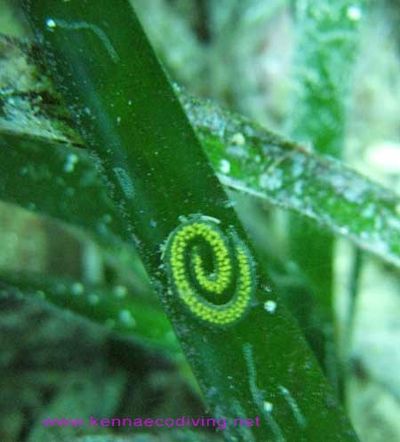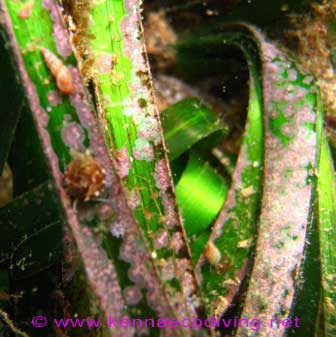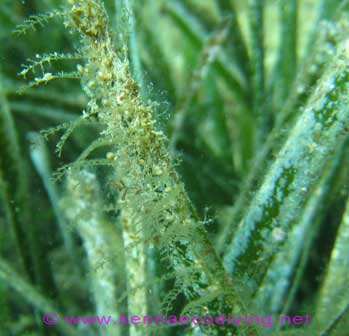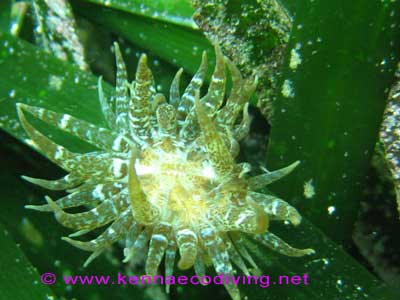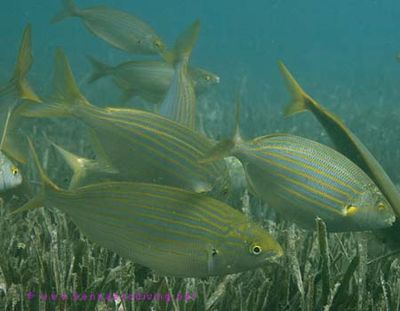Mediterranean seagrass ecosystem
Contents
Introduction
Posidoniaceae is one of the 5 families of seagrasses, descendants of terrestrial plants that re-colonised the ocean between 100 and 65 million years ago. Seagrasses are monocotyledons that are not true grasses (family Poaceae) but are closely related to the lily family, Magnolyophyta.
The Posidonia genus has 9 species: Posidonia angustifolia, P. australis, P. sinuosa, P. coriacea, P. denhartogii, P. kirkmanii, P. ostenfeldii, P. robertsonae and P. oceanica. Whilst the other species are found around southern Australia, Posidonia oceanica (Linnaeus) Delile is endemic to the Mediterranean Sea and grows within a temperature range of 10ºC to about 30ºC. Temperature is therefore considered the central parameter controlling the geographical distribution of this species. P. oceanica beds cover between 25,000 and 50,000 km2 of the coastal areas of the Mediterranean, corresponding to 25% of the sea bottom at depths between 0 and 40 m.
P. oceanica is a marine flowering plant (angiosperm) with a millenary life span, a need for light and clear water, and a very slow growth (a few centimetres per year) and poor reproduction rate. P. oceanica propagates slowly, through the elongation of horizontally growing rhizomes, which eventually forms tightly knit mattes of rhizomes that hold the sandy seabed in place. Thus the meadow rises, over decades, producing reefs up to 3 m high that can be thousands of years old. These meadows accumulate sediment and mediate wave motion, minimising the effect of wave action and therefore helping to stabilise the coastline. This process also reduces the amount of sediment suspended in the water, helping to maintain the clear water conditions P. oceanica requires for growth.
Posidonia oceanica (L.) Delile forms dense and extensive underwater meadows with leaves that can attain 1 metre in height. These meadows provide important ecological functions and services and support a highly diverse community, including species of economic interest.
Ecological Benefits
P. oceanica meadows play an important biological and ecological role, providing benefits to humans that rank among the highest of all ecosystems on earth. They are vital within their ecosystem for the production of oxygen and organic material and they support numerous animal species that utilise them as a site for breeding, feeding and shelter. The leaves and rhizomes increase the surface available to sessile species and offer shelter to mobile species, thereby sustaining a diverse community (Templado 1984[1]). Posidonia beds are especially valuable as nursery grounds for several commercial species (Francour 1997[2]).
A moderately wide (1 km) belt of P. oceanica meadow may produce litter in excess of 125 kg of dry seagrass material per metre of coastline each year (mostly during autumn). This material accumulates on the beach, developing cushions up to 4 metres high, which can in turn sustain a complex invertebrate food web, protect the shoreline from erosion, deliver inorganic material in the form of carbonate and silica shells and, when transported further inland by the wind, may act as seed material for dune formation (Borum et al. 2004[3]).
Dried P. oceanica leaves were traditionally used in Mediterranean countries as packing material to transport fragile items of glassware and pottery, and also to ship fresh fish from the coast to cities. As parasites are less successful in P. oceanica leaves than in straw, they were utilised in stables, as roof insulation, and as a filling material for mattresses to prevent respiratory infections. Further medicinal uses included the alleviation of skin diseases and leg pain caused by varicose veins.
The seasonality of P. oceanica allows other ecosystems to be enriched by the swathe of organic material that is carried by the currents and waves. The biomass of P. oceanica decomposes slowly and stores a significant amount of carbon in the sediment over long periods. Seagrasses are responsible for 12% of the carbon stored in ocean sediments and play a significant role in the regulation of the global carbon cycle. In daylight, P. oceanica meadows oxygenate coastal waters (Bay 1984[4]), and have been called the lungs of the Mediterranean Sea.
Left undisturbed over a very long period P. oceanica seagrass beds form into reefs that slow down wave movement and protect the shore from erosion. The leaves trap larger grains of sand, providing a natural filter that ensures water reaching the shore is clearer and cleaner. P. oceanica meadows are excellent indicators of environmental quality as they can only grow in clean unpolluted waters. Moreover, their rhizomes concentrate radioactive, synthetic chemicals and heavy metals, recording the environmental levels of such persistent contaminants.
Posidonia oceanica associates
Species that Depend on the Posidonia oceanica habitat
P. oceanica meadows serve as sanctuaries for numerous species during breeding and as a year round refuge and food source for others. Calcifying organisms such as coralline algae, molluscs and foraminifera, some of which grow between the seagrass shoots and some as epiphytes are important components of the meadows. Epiphytic communities, growing on the leaves and rhizomes of the plant, provide a food source for sea slugs, sea hares (e.g. Aplysia fasciata and Aplysia depilans) and several species of nudibranch, which also deposit their eggs on the Posidonia leaves.
In healthy meadows, the red algae Fosliella spp. and Hydrolithon spp., and brown algae, like the complex Giraudio-Myrionemetum orbicularis, cover the tips of the leaves. Sessile animals, such as hydroids (over 44 species identified including the obligate species Sertularia perpusilla and Plumularia obliqua posidoniae), bryozoans (more than 90 species, like the obligate species Electra posidoniae and Lichenopora radiata) and encrusting ascidia (e.g. Botryllus schlosseri) are also a common component of the leaf epiphytic community.
Algae adapted to low levels of light intensity, mostly red algae, colonize the rhizomes (e.g. Peyssonnelia squamaria and Udotea petiolata) and light dependent algae like Jania rubens may appear on meadow borders. In fact, the primary production of P. oceanica meadows is a combination of seagrass leaf growth and that of micro- and macro-epiphytic and benthic seaweeds, with the latter groups occasionally contributing as much to the ecosystem production as the seagrass itself (Hemminga and Duarte 2000[5]).
The sediment that accumulates within seagrass beds is much richer in organic matter and nourishing salts than adjacent sediment of the bare sandy areas, and an army of different suspension-feeding animals such as feather stars, ascidia, sponges, hydrozoa, and tube worms take advantage of this, together with sediment-feeding animals such as sea cucumbers and brittle stars. These in turn serve as food for carnivorous animals such as crabs, fish, octopus, cuttlefish and starfish.
Key Fauna
Information on key fauna associated with P. oceanica beds can be directly relevant for the interpretation of seagrass monitoring results, particularly in cases where the fauna grazes the seagrasses. Moreover, the associated species assemblages often reflect plant health and their monitoring adds to the general understanding of the importance of seagrass beds for coastal biodiversity.
Relevant key fauna to measure in connection with P. oceanica monitoring programmes are listed below:
- Sea urchins – are often important grazers of seagrasses. Grazing by the sea urchin Paracentrotus lividus occasionally (overgrazing events) can be so intense that it may even result in the elimination of extensive seagrass patches. The density of sea urchins increases with increasing nutrient in the environment, and, hence, concentration in plant tissues. An increased grazing activity by sea urchin has, for example, been observed in P. oceanica meadows situated under fish cages. However, at more typical or natural nutrient levels, sea urchins have a relatively minor impact on the seagrass whilst grazing by the fish species Sarpa salpa can outstrip the plants' leaf production.
The most abundant Echinoderms within P. oceanica meadows are sea cucumbers (16 species described) which play an important ecological role as sediment filterers. Among them, Holothuria tubulosa predominates in dense, sandy meadows, while H. polii is more prevalent in sparse or degraded meadows, although it is very difficult to distinguish these two species. At night, many mobile species living within the rhizomes migrate to feed in the canopy.
- Fish – As indicated above, Sarpa salpa, or cow bream, form large schools in Posidonia oceanica meadows during summer causing mowed patches in which the biomass can be reduced by as much as 50% (Tomas et al 2005[6]). Many fish species utilise P. oceanica meadows as nurseries during their juvenile stage. There are also resident species, the most common of which are Gobius spp. (living on rhizomes), as well as Labrus merula, L. viridis, Symphodus spp., Diplodus spp, Sarpa salpa, Coris julis and Chromis chromis. There are also some obligate species living within the leaf canopy, like the cryptic species Opeatogenys gracilis and Syngnathus typhle. The endangered species Hippocampus hippocampus is also found within the canopy.
- Molluscs – some large species, like the Mediterranean bivalve Pinna nobilis, are exclusively dependent on seagrasses, and are therefore inherently affected by physical impacts on the meadows, e.g. boat anchoring. Presence of P. nobilis is a characteristic of healthy seagrass meadows. Some species of snail (e.g. the genus Rissoa) are also frequent on seagrasses, whereas predatory molluscs such as the cuttlefish Sepia officinalis and octopus Octopus vulgaris are frequently seen around the edges of P. oceanica beds. Mollusca (more than 185 species described) and Crustacea (more than 120 species of Copepoda, Decapoda and Amphipoda) are the most abundant faunal groups in P. oceanica meadows.
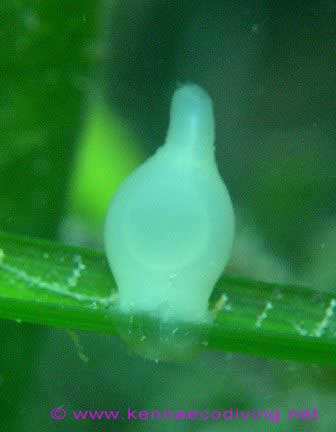
Threats:
As for most submerged plants, light is the key abiotic factor controlling P. oceanica productivity and spatial distribution. The levels of solar irradiance reaching a meadow controls both daily growth and seasonal growth, with levels being reduced by environmental factors such as water depth, turbidity, the state of surface ripples and waves. Temperature and salinity are also important abiotic factors controlling P. oceanica production.
Sedimentation/Erosion Balance
While very intense sedimentation processes may kill Posidonia plants, it is also particularly sensitive to an increase in the turbidity of sea water caused by waste and spillages, and is similarly affected by the persistent erosion of the sea bed which can rip out its roots and rhizomes. Increased sedimentation caused by storms, flooding, coastal soil erosion, dredging near seagrass meadows or coastal construction smother the plants irreversibly or create high concentrations of suspended sediments that reduce the light reaching the seagrasses.
In the Ligurian Sea it is estimated that nearly 30% of the original surface area of P.oceanica meadows was lost during the 1960s, a period of rapid urban and industrial coastal development. However, this decline also corresponds with a cold phase in global temperature trends within this decade making it difficult to distinguish between the effects of climate change and those of direct human pressure.
The first results of a long-term monitoring programme in the Ligurian Sea reported that at three stations (5, 10 and 17 m depth, sampled each March, June, September and December by SCUBA diving) showed a similar pluriannual trend, consisting of a decrease in density and an increase in mean leaf length, suggesting a continued decline in the vitality of the meadow (Peirano et al 2001[7]).
A study of P. oceanica meadows near a coastal construction site in the Ligurian Sea suggested that light reduction accounted for the reduced seagrass productivity and abundance, although there were also other complex interactions such as nutrient-epiphytes-grazers and water quality-siltation involved in seagrass mortality (Ruiz et al 2003).
Coastline transformation, with the proliferation of roads and houses and the regulation of continental river-flow, sharply reduces sediment inputs to the submersed coastal habitats, thereby promoting meadow erosion in their area of influence. Dredging and sand reclamation activities close to meadows have a high risk of direct meadow removal and may produce bed siltation or erosion.
Eutrophication
Eutrophication (nutrient loading) has been found to be responsible for the deterioration of seagrasses on a national and regional scale. Excess nutrients find their way into the sea from urban sewage outlets, industrial outlets, run off from agricultural areas, atmospheric deposition from agriculture and the burning of fossil fuels. Nitrogen and phosphorus are the most important nutrients for regulating the growth of planktonic algae, and hence water transparency and light conditions for seagrasses. Nutrients also stimulate the growth of opportunistic, fast-growing algae living on seagrass leaves, causing additional shading and further diminishing the plants' ability to photosynthesise. Studies over the past 10 years measuring P. oceanica cover and shoot density along the Mediterranean coasts have shown an overall decline. A further effect of eutrophication is the increased loading of organic materials such as dead algae to the sediment, which increases its O2 demand and may cause excessive hypoxia, which kills the seagrass roots.
Direct Erosion
by Boat-trawling and Boat Anchoring
Otter trawling is one of the most important causes of large-scale degradation of P. oceanica meadows, particularly in deep meadows (e.g. Ardizzone and Pelusi 1984[8], Erftemeijer and Robin Lewis 2006[9]). The repeated use of trawl gear over the seabed pulls up P. oceanica leaves and rhizomes (100,000 to 360,000 shoots per hour, Martín et al. 1997)), greatly reducing plant density and cover. As the trawl passes over the seabed, it also re-suspends the sediment and alters the substrate structure, increasing turbidity and nutrient concentrations in the water column. Reduced plant cover and the altered sediment interact to maintain silted conditions. The slow regrowth of P. oceanica further extends the impact of trawling which can sometimes run into decades (González-Correa et al. 2005[10]).
In sites frequently visited by pleasure boats, there is significant removal of seagrasses by boat anchors (Francour et al. 1999). Also moorings consisting of a dead weight lowered to the seabed, attached to a partially crawling chain, form characteristic bare circles in P. oceanica meadows. These clearings persist for many years after the removal of the moorings. If the anchoring density and frequency are too high, the subsequent erosion may be accelerated by increased water movement caused by boating activities.
Invasive Algal Species
The sustained increase in global marine transport favours the rapid expansion of exotic species that can harm existing communities (Galil 2007[11]). In the Mediterranean Sea, around 100 exotic macrophytes have been introduced in the last few decades, of which at least 10 have an invasive nature (Ballesteros 2007[12]). Those that most affect P. oceanica meadows are the green algae Caulerpa taxifolia and C. racemosa. Although these species do not apparently penetrate into dense healthy meadows, they may, when associated with other perturbations (e.g. eutrophication, bottom trawling), accelerate meadow decline, since they compete for space and light and increase the quantity of labile organic matter in the sediment.
Recently, the invasive red alga Lophocladia lallemandii has been shown to induce P. oceanica shoot mortality (Ballesteros 2007[12]). L. lallemandii settles on rhizomes and old leaves along the edges of meadows and in low density patches where it grows rapidly, produce disc-like holdfasts along the thalli that enable the formation of a mat of red algal filaments intermingled with P. oceanica leaves. This mat can become so thick that leaves confined within may display chlorosis, and shoots eventually die.
Cosmopolitan filamentous algae may also behave as an invasive species, forming dense mucous layers on P. oceanica canopies in calm periods usually of 1 to 3 months, and, in so doing, reducing light availability to the seagrass (Lorenti et al. 2005). Some studies indicate that such episodes affect P. oceanica growth and survival, while others show no evident impacts. Their effect probably depends on their persistence and frequency as P. oceanica can resist shading for several months (Ruiz and Romero 2001[13]). Finally, Acrothamnion preissii, a new exotic red algae that invades P. oceanica rhizomes has no apparent effects on seagrass integrity but it does displace most of the autochthonous rhizome epiphytes which reduces the meadow’s faunal species diversity and habitat complexity.
Salinity Increase
in the Vicinity of Water Desalination Facilities
P. oceanica is especially sensitive to increases in salinity levels (Fernández-Torquemada and Sánchez-Lizaso 2005[14]). Salt concentrations above 39 p.s.u. induce rapid plant death (Sabah et al. 2003). Thus, the brine (40-80 p.s.u.) from water desalination facilities, when poured directly onto P. oceanica meadows, can produce diebacks across large areas. Moreover, pipelines constructed to divert the brine to offshore areas destroy considerable meadow surfaces. The present and projected increase in coastal desalination facilities is therefore an emergent threat to P. oceanica meadows.
Fish Farm Activity
Since the onset of fish farm activity on the south-eastern coast of Spain, 11.29 ha of P. oceanica meadow has been completely lost and 9.86 ha significantly degraded, affecting about 53% of the former meadow area (Ruiz et al. 2001[15]). The impact of fish farms on seagrasses seems to be highly variable and depends on complex interactions between a large number of processes such as decreased water transparency, increased dissolved nutrient and organic content of sediments in the vicinity of cages, and overgrazing by herbivores.
Climate Change
The potential effects of global climate change include increasing seawater CO2 levels and decreasing pH (ocean acidification). While this could affect P. oceanica photosynthesis and growth, insufficient data is available to predict the effects of CO2 and pH on seagrass meadows. The effects of global change are likely to accelerate the decline in already stressed seagrass meadows.
Trends
Most information available on the distribution of seagrass meadows is focused on the European Mediterranean coasts, while information along the Mediterranean African coasts is sparse. In a bibliographic review of 46 local or regional studies on 135 surveyed meadows, 20 meadows showed extreme regression (more than 50% of the area lost), 62 showed some degree of decline, 30 appeared stable and 23 experienced some degree of progression.
The following data has been extracted from the Natura 2000 Network database, elaborated by the European Commission with data updated on December 2006. The surface was estimated on the basis of the habitat cover indicated for each protected site and should be considered only as indicative of the habitat surface included in Natura 2000 (approximately 6 to 12% of the total habitat surface).
| Biogeographical region | Nº of sites | Estimated surface (ha) | % of total surface in Natura 2000 |
|---|---|---|---|
| Italy | 157 | 122,049 | 44.11 |
| Spain | 70 | 70,029 | 25.31 |
| Greece | 71 | 57,514 | 20.79 |
| France | 18 | 25,999 | 9.40 |
| Cyprus | 4 | 952 | 0.34 |
| Malta | 1 | 118 | 0.04 |
| Slovenia | 1 | 6 | 0.01 |
| Mediterranean total | 322 | 276,668 | 100 |
The slow recovery rates of P. oceanica necessitate the detection of trends in meadow dynamics before declines in seagrass cover and density become noticeably evident. Along the Spanish coasts, this was achieved by studying shoot demography, i.e. variation in shoot recruitment and mortality in meadows. The studies showed declining trends (mortality>recruitment) in 21 of 37 meadows and increasing trends (recruitment>mortality) in 7 meadows, while the remaining 9 meadows were in steady state. Among the meadows showing a declining trend, several are located far away from direct human influences. This finding suggests the existence of a background level of generalised P. oceanica declines possibly caused by global environmental factors, such as general deterioration of water transparency, or seawater temperature increase (both documented changes in Mediterranean waters).
In the National Park of Cabrera Island (Spain), an analysis was carried out by reconstruction of past and present growth, quantification of the demographic status of the established meadows, and quantification of patch formation and growth rates in areas where recolonization was occurring. Whilst regulation of mooring activities has improved the status of the P. oceanica meadows at Cabrera National Park, the process of recolonization of bare patches is still so slow that coalescence of patches and adjacent beds into a homogeneous meadow has been estimated to take more than 6 centuries. At a larger spatial scale in coastal areas of Mallorca (Spain) comparison of aerial photos from 1956 and 2001 shows that the 569 ha of meadow initially present had produced 28 ha of new meadow in the 45 years, representing a gain of 5%. However, P. oceanica losses in the area were higher than the gains, as 81 ha were lost in the same period (Marbà et al 2002[16]).
Within the European seagrass flora, P. oceanica is the species with the lowest recolonization capacity. The slow rhizome elongation rate (a few cm per year) and the sparse flowering of this species, are conducive to a low recolonization capacity. Natural recovery of P. oceanica meadows is an extremely slow process, even following small-scale disturbances and small (m2) gaps within P. oceanica meadows can remain visible over several years.
For example, during the Second World War, in 1943, a bomb dropped and exploded within a dense meadow in the Rade de Villefranche (France): a circular area 80 m in diameter was completely destroyed, with a total area of 170m diameter altered. Forty years later the crater was still perfectly distinguishable, although surrounded by dense and apparently healthy meadows. Many small patches have colonised the zone at an average rate of 3 new patches per ha per year, and the surrounding meadow has migrated slightly from the borders into the centre of the crater. The estimated average linear growth was only 3.4 cm per year, however, which is half the potential horizontal growth of this species. The time necessary to completely recover this small area is estimated at 120 to 150 years (Meinesz and Lefèvre 1984[17]), and large-scale recovery requires time scales of centuries (500 – 800 years, depending on patch formation rate).
Large-scale decline appears to be widespread, involving a number of factors, such as constructions along the shoreline (e.g. ports, wave breakers, etc.), enhanced organic and nutrient inputs from land and from aquaculture activities, coastal erosion and mechanical damage by trawling boats and anchors. The deterioration of sediment conditions due to enhanced organic inputs may slow recolonization even further, as rhizomes cannot extend into anoxic sediments.
Conservation Measures
P. oceanica meadows are identified as a priority habitat type for conservation in the Habitats Directive (Dir92/43/CEE) and P. oceanica is protected at the European level, as a priority habitat (Dir. 92/42 CEE 21/05/92 and 97/62/CE 27/10/1997) and as a species (Bern Convention, Annex 1). Bottom-trawling is expressly forbidden on seagrass meadows (Fishing regulation 1626/94).
The species and/or the habitat also receive specific legal protection in several European countries. At the national and regional levels, P. oceanica meadows are protected in Spain (RD 7/12/1995, BOE nº310) and France. P. oceanica is also protected as a species in France (Arreté Ministeriel 19/07/1988) and in Catalonia (Spain, Orden 91.210.098 DOGC nº 1479 12/08/1991), where all seagrass species are protected. In Valencia and the Balearic Islands (Spain), bottom trawling on seagrass meadows has been explicitly forbidden since 1993. In Spain, Italy and France, restrictions on trawling over meadows have been reinforced in the last decade by the deployment of protective artificial reefs that are usually installed in Marine Protected Areas (MPAs). Aquaculture facilities over seagrass meadows are also forbidden in the Balearic Islands (Orden nº 19611 21/09/1993).
With the Water Framework Directive the Member States have established a mutual platform and obligation to ensure a “good ecological status” of all surface waters. Extended seagrass beds with a good penetration to deep waters are characteristic of coastal waters with minimal anthropogenic impact. Since seagrasses are mostly perennial organisms, they reflect temporally integrated environmental conditions, and, therefore, are excellent indicator organisms on which environmental monitoring and management of coastal waters can focus.
Nutrient loading is the most important factor responsible for deterioration of seagrass beds on national and regional scales. Urban and industrial sewage must be systematically diverted to treatment plants which have an efficient means of removing organic matter and nutrients. Sustaining and protecting narrow zones of uncultivated soils along streams and rivers together with undisturbed wetlands have significant potentials for intercepting nutrient runoff before reaching the sea.
Despite their important function, the creation of Marine Protected Areas (MPAs) is often insufficient as many of the negative impacts upon habitats such as P. oceanica are not of local origin. The European Environment Agency advocates the development of coordinated plans at an international level throughout the Mediterranean to protect such important habitats through integrated environmental management.
Recolonization rates of P. oceanica can be somewhat accelerated by measures to improve the growth conditions for seagrasses including action on the sources of deteriorated water and sediment quality and measures to stop mechanical damage. In order to reduce the erosive pressure of free anchoring and mooring in shallow meadows, ecological moorings are increasingly being provided to boat users, usually installed within MPAs that have foreseen specific control measures as part of their management plans.
Baseline mapping is important to assess P. oceanica distribution, plan management strategies and monitor changes. In addition, regular assessments are required to identify disturbances to seagrass habitats and to determine management efforts. These assessments should include seagrass abundance (cover, density and/or biomass), habitat extent and species composition (in mixed meadows). Monitoring programmes rely on a combination of volunteers, technical personnel and scientists. Volunteer-based networks create a culture of community support for seagrass protection and for the wise management of coastal habitats.
Restoration Initiatives:
Dredging Recovery
In Capo Feto (SW Sicily, Italy) a gas pipeline trench destroyed 150 ha of P. oceanica beds and affected adjacent meadow density and growth. The trench was partially back-filled with rubble from dump barges which led to the formation of a series of rubble mounds on the seabed. The coarse materials prevented siltation and enabled light conditions to return to normal after installation. In 10 years, these mounds became partially colonised by vegetative fragments of P. oceanica. In rubble mound valleys, such fragments coalesced. At 15 meters depth, the valleys even reached shoot densities equivalent to those prior to the installation of the pipeline. But the plants did not progress on the sides and crests of the rubble mounds, due to stronger hydrodynamics in these areas (Di Carlo et al. 2005[18]).
Transplantation of Posidonia oceanica
Due to the extremely slow rhizome growth rate of P. oceanica natural meadow recovery takes place on a time scale of centuries. This fact provides support for a process of artificial acceleration of recovery through transplantation. However, for a major transplanting programme to be implemented, thousands of plants are needed, and the slow growth rates of the plants therefore introduce the added problem of source material. If plants are to be supplied in the form of vegetative cuttings, donor plants should be collected from as many meadows as possible to avoid serious impacts on donor beds.
Transplantation of Seedlings
P. oceanica does not flower every year and seeds do not enter into dormancy, which means that a seed bank is not established below the plants. However, some meadows reproduce sexually more frequently than others – on average every second year. Further, widespread flowering and fruiting occurs in years following exceptionally high summer temperatures.
Information on such meadows and on temperatures allows planning of seed collection. Fruits of P. oceanica float and seeds or seedlings can easily be collected in great numbers along the coasts in spring and summer. The seeds germinate very well in tanks containing seawater (70-80% germination success), where they can survive and grow under suitable conditions and thus make a plant nursery for later transplantation.
Success of P. Oceanica Transplantation
Large-scale transplanting (1 ha) of vegetative shoots detached from meadows by storms was performed in the Bay of Cannes in 1984 with concrete frames. Ten years later, the plant-covered area had increased by a factor of seven and the number of shoots had increased nine times. The plants formed oblong islets with numerous running rhizomes indicating active colonisation.
However, epiphyte growth on leaves of transplanted plants was three times higher compared with leaves of adjacent non-transplanted meadows. This phenomenon may be density-dependent and destructive to the plants, since considerable epiphyte growth may lower the photosynthetic efficiency of the plants and attract grazers that might damage the transplants.
Pilot studies have shown that P. oceanica seedlings transplanted onto “dead mattes” have a 70% survival rate after three years. Piazzi et al. (1999) observed that natural seedlings survive better if fixed on dead matte at the depth of 10 m and that the critical period for survival of the juvenile shoots seems to be limited to their first year of life.
However, these seedlings seem to be less capable of developing branching shoots compared with transplanted vegetative fragments – at least in the short term. Thus, after three years from transplantation, 87% of the vegetative transplants showed branching growth while this number was only 14% for seedlings. Transplants do not survive for long on pebbles or gravel but may develop on rocks covered with epiphytes if currents and waves are sufficiently weak.
Most restoration initiatives including both seed and vegetative recruits from donor beds have shown a poor success rates. The plant’s requirements concerning light, nutrient levels, sedimentation rate, sediment type and quality (sand and organic matter content, sulphide and oxygen conditions), substrate stability, current intensity, wave exposure, temperature and salinity and potential herbivore pressure, should all be within the range acceptable for P. oceanica before any transplant is initiated (Balestri, 1998).
References
- ↑ Templado J. 1984. Las praderas de Posidonia oceanicaen el sureste español y su biocenosis. In: International Workshop on Posidonia oceanicabeds. Porquerolles, 12-15 Oct. 1983. 1:159-172. Boudouresque C. F., Jeudy de Grissac A., Olivier J. [eds], GIS-Posidonie Publ. Marseille.
- ↑ Francour P. 1997. Fish assemblages of Posidonia oceanicabeds at Port Cros (France, NW Mediterranean): Assessment of composition and long-term fluctuations by visual census. Marine Ecology-PSZN 18: 157-173.
- ↑ Borum J., Duarte C.M., Krause-Jensen D. & Greve TM (eds.), 2004. European seagrasses: an introduction to monitoring and management. EU project Monitoring and Management of European Seagrass Beds (Publ). 88 pp. ISBN: 87-89143-21-3.
- ↑ Bay D. 1984. A field study of the growth dynamics and productivity of Posidonia oceanica(L.) Delile in Calvi Bay, Corsica. Aquatic Botany 20: 43-64.
- ↑ Hemminga, M.A. and Duarte, C.M. 2000. Seagrass Ecology: An Introduction. Cambridge University Press, Cambridge, 298 pp. ISBN:0521661846.
- ↑ Thomas, F., Turon, J. and Romero. X (2005) Seasonal and small-scale spatial variability of herbivory pressure on the temperate seagrass Posidonia oceanica. Inter-Research in MEPS Vol.301.
- ↑ Peirano, A., Nike Bianchi C., Savini, D. and Farina, G. A long-term monitoring activity on a Posidonia oceanicameadow at monterosso al mare (Ligurian Sea). Archo Oceanogr. Limnol. 22 (2001), 145-148.
- ↑ Ardizzone G. D., Pelusi P. 1984. Yeld and damage evaluation of bottom trawling on Posidonia meadows. International Workshop on Posidonia oceanicabeds. (eds) Boudouresque C. F., Jeudy de Grissac A., Olivier J. Porquerolles 1, 255-259.
- ↑ Erftemeijer, P.L.A., Lewis, R.R.R III. 2006. Environmental impacts of dredging on seagrasses: A review. Marine Pollution Bulletin 52: 1553-1572.
- ↑ González-Correa J. M., Bayle J. T., Sánchez-Lizaso J. L., Valle C., Sánchez-Jerez P. & Ruiz J. M. 2005. Recovery of deep Posidonia oceanicameadows degraded by trawling. Journal of Experimental Marine Biology and Ecology 320: 65–76.
- ↑ Galil B. S. 2007. Loss or gain? Invasive aliens and biodiversity in the Mediterranean Sea. Marine Pollution Bulletin 55: 314–322.
- ↑ 12.0 12.1 Ballesteros, E., Cebrian, E., Alcoverro, T. (2007). Mortality of seagrass Posidonia oceanica following meadow invasion by red alga Lophocladia lallemandii. Bot. Mar. 50: 8-13.
- ↑ Ruiz J. M. , Romero J. Effects of disturbances caused by coastal constructions on spatial structure, growth dynamics and photosynthesis of the seagrass Posidonia oceanica. Marine pollution bulletin, 2003, vol. 46, no12, pp. 1523-1533.
- ↑ Fernández-Torquemada Y. & Sánchez-Lizaso J. L. 2005. Effects of salinity on leaf growth and survival of the Mediterranean seagrass Posidonia oceanica(L.) Delile. Journal of Experimental Marine Biology and Ecology 320: 57–63.
- ↑ Ruiz J. M., Romero J. (2003) - Effects of disturbances caused by coastal constructions on spacial structure, growth dynamics and photosynthesis of the seagrass Posidonia oceanica. Mar Poll. Bull., 42(9): 749-760.
- ↑ Marbà N, Duarte CM, Cebrián J, Enríquez S, Gallegos ME, Olesen B, Sand-Jensen K (1996) Growth and population dynamics of Posidonia oceanicain the Spanish Mediterranean coast: elucidating seagrass decline. Marine Ecology Progress Series 137: 203-213.
- ↑ Meinesz A, Lefevre JR (1984) Régéneration d’un herbier de Posidonia oceanicaquarante années après sa destruction par une bombe dans la rade de Villefranche (Alpes- Maritimes - France). International Workshop on Posidonia oceanicabeds. Porquerolles (France) 12-15 October 1983. Eds. Boudouresque CF, Jeudy de Grissac A, Olivier J. GIS-Posidonie Publ. Fr. 1:39-44
- ↑ Di Carlo, G., Badamenti, F., Jensen, A.C., Koch, E.W. and Riggio, S. (2005) Colonisation process of vegetative fragments of Posidonia oceanica(L.) Delile on rubble mounds. Marine Biology, 147, (6), 1261-1270
See also
- Seagrass recovery and restoration in the Wadden Sea
- Seagrass meadows
- Posidonia oceanica (Linnaeus) Delile
Please note that others may also have edited the contents of this article.
|
